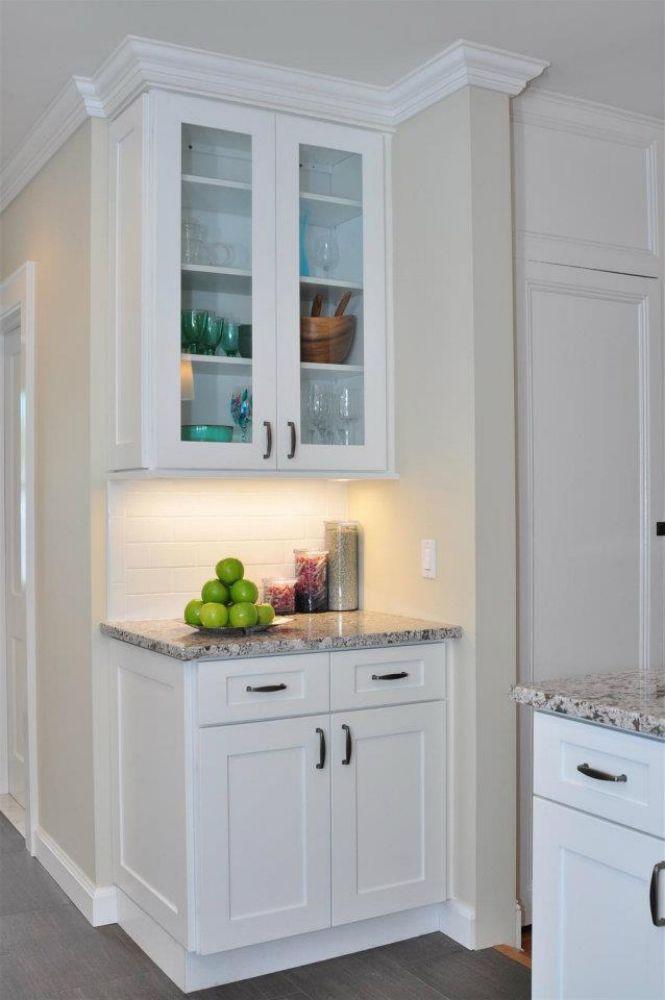Measuring for Forevermark Cabinets Installation
One of the most critical steps in any kitchen remodel is measuring your space accurately before ordering cabinetry. A small mistake in measurements can lead to costly delays, ill-fitting cabinets, or wasted materials. For homeowners planning to upgrade with Forevermark Cabinets, proper measurement ensures a smooth installation process and a beautiful, functional kitchen design. You can browse more details about available cabinet lines at Forevermark Cabinets, offered by My Kitchen Cabinets, a trusted source for stylish and affordable cabinetry.
This guide will walk you step by step through the process of measuring correctly for Forevermark Cabinets installation, explaining tools, techniques, and tips to avoid common mistakes.
Why Accurate Measurements Are Crucial
Forevermark Cabinets come in standardized sizes, which makes it easier to design layouts—but only if the space is measured properly. Incorrect measurements can cause:
-
Gaps between walls and cabinets.
-
Misalignment with appliances.
-
Improper countertop fit.
-
Extra costs from reordering or modifying cabinets.
By taking precise measurements, you’ll avoid these issues and ensure your kitchen remodel goes smoothly.
Tools Needed for Measuring
Before you start, gather the following tools:
-
Measuring Tape (at least 25 feet): For long wall spans.
-
Level: To check whether floors, walls, and ceilings are even.
-
Graph Paper or Software: To create a floor plan sketch.
-
Pencil and Eraser: For recording and correcting notes.
-
Straightedge or Ruler: For accurate sketching.
-
Step Stool or Ladder: For reaching ceiling measurements.
-
Smartphone/Camera: To photograph existing layouts and obstacles.
Having these tools on hand ensures efficiency and accuracy during the measuring process.
Sketching the Kitchen Layout
Start by sketching your kitchen on graph paper. Don’t worry about perfection—your sketch is simply a reference point for recording numbers. Include:
-
All walls in the kitchen area.
-
Doorways, windows, and hall openings.
-
Placement of appliances and sinks.
-
Obstacles such as soffits, radiators, or angled walls.
This drawing will help you visualize where Forevermark Cabinets can be placed.
Measuring Wall Lengths
Using your tape measure, measure each wall from corner to corner. Write down every measurement on your sketch.
-
Measure at countertop height and floor level to check for differences.
-
If walls bow or angle, record the smallest measurement.
-
Mark obstacles (vents, radiators, or pipes) that may affect cabinet placement.
Forevermark Cabinets come in standard widths (from 9 to 48 inches), so accurate wall dimensions help you determine which sizes fit best.
Recording Ceiling Heights
Ceiling height determines whether you can install 30-inch, 36-inch, or 42-inch wall cabinets.
-
Measure from floor to ceiling in several spots to check consistency.
-
If your ceiling slopes or has soffits, note these variations.
-
Record if you plan to leave space above cabinets or go full height for storage.
These details prevent surprises during installation.
Measuring Doors and Windows
Doors and windows directly affect where cabinets can go. To measure correctly:
-
Record the width and height of each window and door.
-
Measure from the nearest wall corner to the edge of trim.
-
Note the swing direction of doors so cabinets don’t obstruct them.
-
Record window sill height for countertop and backsplash alignment.
These measurements help plan where wall cabinets, sinks, or tall cabinets can be installed.
Measuring Appliance Spaces
Since cabinets must align with appliances, measuring them is essential:
-
Record width, height, and depth of refrigerators, dishwashers, ovens, and microwaves.
-
Note clearance space required for door swings.
-
Include vent hoods and ranges, marking their exact position on your sketch.
Forevermark Cabinets can be ordered in standard sizes to accommodate appliances, but only precise measurements ensure perfect fit.
Accounting for Plumbing and Electrical Fixtures
Cabinets should never block plumbing or electrical systems. Measure and record the position of:
-
Sink plumbing and drain lines.
-
Dishwasher water connections.
-
Gas lines for ranges.
-
Electrical outlets, switches, and lighting fixtures.
-
HVAC vents or returns.
Marking these ensures your cabinets fit around utilities.
Checking Floor Level and Wall Alignment
Uneven floors and walls can affect cabinet installation. To check:
-
Place a level across the floor where base cabinets will sit.
-
If the floor isn’t level, measure the variation.
-
Use a level on walls to check for bowing or leaning.
Forevermark Cabinets are well-constructed, but installers may need shims to adjust for irregularities.
Measuring for Kitchen Islands
If you plan to include an island:
-
Ensure at least 36–42 inches of clearance around all sides for walking space.
-
Measure available width and depth in your kitchen’s center.
-
Account for electrical outlets if required.
Forevermark Cabinets can be used to construct functional islands with both storage and seating.
Double-Checking Measurements
Once you’ve measured everything, review your notes carefully:
-
Verify each wall length by adding segment measurements—total should equal overall wall length.
-
Check that appliance dimensions match available spaces.
-
Confirm that ceiling heights are consistent with cabinet sizes.
This step eliminates costly mistakes later.
Translating Measurements into Cabinet Layout
With accurate dimensions, you can start planning where each cabinet will go. Forevermark offers:
-
Base Cabinets: Typically 24 inches deep and 34.5 inches tall (without countertops).
-
Wall Cabinets: Available in 30-inch, 36-inch, and 42-inch heights.
-
Pantry/Tall Cabinets: Usually 84–96 inches tall for maximum storage.
Matching your measurements with Forevermark’s cabinet sizes ensures an efficient and stylish design.
Common Mistakes to Avoid
When measuring for cabinets, homeowners often make these errors:
-
Forgetting to include door trim or window casing.
-
Ignoring uneven floors or ceilings.
-
Not accounting for appliance clearance.
-
Estimating instead of recording precise numbers.
Avoiding these mistakes ensures a smoother Forevermark Cabinets installation.
Benefits of Professional Measuring
Although DIY measuring is possible, many homeowners choose professional services for added peace of mind. Dealers like My Kitchen Cabinets often provide expert measurement and design consultations to ensure accuracy.
Forevermark vs. Competitors in Installation Prep
-
IKEA: Relies on modular sizes but uses mostly particleboard. Measurements must be exact with little room for modification.
-
Luxury Brands: Offer full customization but at higher costs.
-
Forevermark: Provides standardized, durable cabinet options that fit most layouts when measured accurately.
This balance of affordability and reliability makes Forevermark a smart choice for remodels.
Long-Term Value of Accurate Measurement
Correct measurements don’t just affect installation—they also ensure:
-
Better workflow and ergonomics in the kitchen.
-
Proper alignment of countertops and backsplashes.
-
Increased resale value from a polished finish.
Investing time in measuring guarantees a kitchen that’s both beautiful and practical.
Conclusion: Precision Ensures Perfect Forevermark Cabinets
Measuring correctly is the foundation of a successful remodel. With Forevermark Cabinets, accuracy ensures that your new kitchen will be both stylish and functional. From sketching your layout and recording wall lengths to checking ceiling height, appliance spaces, and utilities, every detail matters.
By double-checking measurements, avoiding common mistakes, and using Forevermark’s standardized cabinet sizes, you’ll achieve a seamless installation that enhances your kitchen’s beauty and efficiency. For those who prefer added assurance, professional measuring services can simplify the process and prevent errors.
Ultimately, Forevermark Cabinets are designed to fit beautifully into any well-measured space, making them a reliable and long-lasting choice for homeowners.
FAQs about Measuring for Forevermark Cabinets Installation
1. What’s the first step in measuring for Forevermark Cabinets?
Begin by sketching your kitchen floor plan, including all walls, doors, windows, and appliances. This provides a clear framework for recording accurate dimensions.
2. How do ceiling heights affect cabinet installation?
Ceiling height determines whether you should choose 30-inch, 36-inch, or 42-inch Forevermark wall cabinets. Taller ceilings may also accommodate full-height pantry units.
3. Should I measure appliances separately when planning cabinets?
Yes, always measure width, height, and depth of each appliance to ensure cabinets are designed with proper clearance and alignment.
4. Can I measure my kitchen myself or should I hire a professional?
You can measure your kitchen with a tape measure and graph paper, but hiring a professional service ensures greater accuracy and eliminates costly mistakes.
5. What happens if my walls or floors aren’t perfectly straight?
Most kitchens have minor irregularities. Installers can use shims to adjust Forevermark Cabinets, but measuring accurately helps anticipate and address these issues early.
Read: How can I customize Forevermark Cabinets with pull-outs and shelving?

